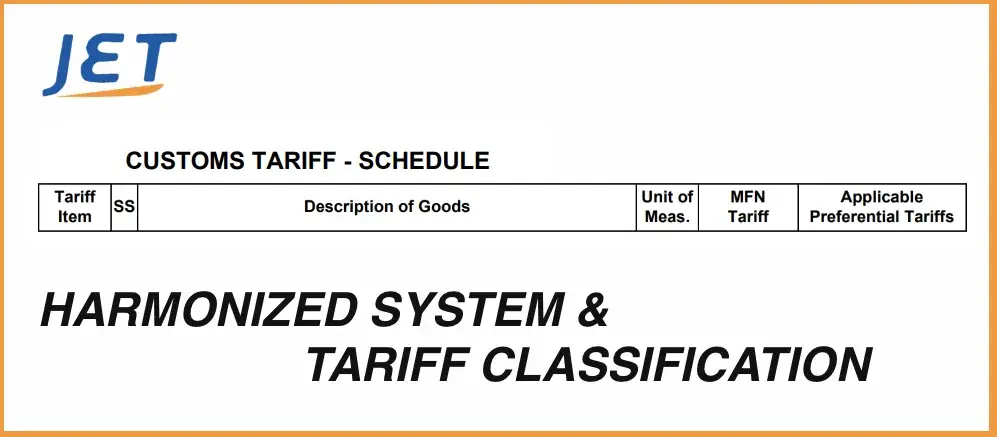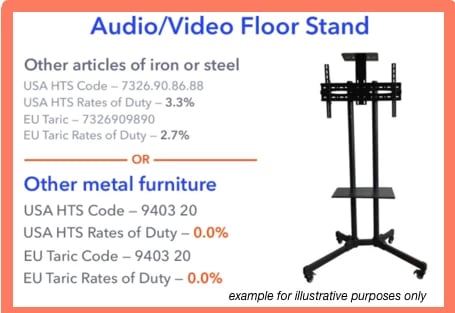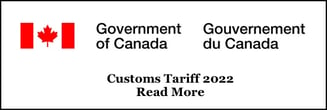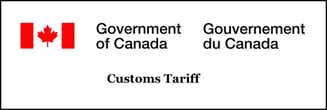
Worldwide Harmonized System Codes Canada
Worldwide Harmonized System Codes Canada
HS codes are a global classification system for importing and exporting goods. Administration of the Harmonize System is via by the World Customs Organization (WCO). It serves as the foundation for the worldwide harmonized system Canada.
HS Codes are key aspect of cross border shipping processes. They are a numerical classification method. Customs authorities rely on this system to identify products cross border transit.

Harmonize System Codes and why they matter?
The Harmonized Tariff Schedule (HTS) is not simply a list of different products. It is a sort of encyclopedia with general sections. Each section then breaks down into more specific chapters. Each chapter includes headings and subheadings.
There are general rules (general rules of interpretation/ GRI) to guide users to the correct classification within this vast database of codes. This post includes a video presentation.
- Customs authorities around the world use it to assess duties.
- The HS assigns specific six-digit codes for all products and commodities. Countries can add longer codes to the first six digits for their own purposes.
- Using the right HS codes is crucial to allow for compliant duty payment, and minimize shipping delays.
See section below about the 2022 harmonize tariff schedule updates.
Disclaimer: The information in Jet Worldwide online content, including this post, is for general information only.
 Expand your cross border transportation and logistics options. Gain a discussion with seasoned professionals. Contact our team for a consultation.
Expand your cross border transportation and logistics options. Gain a discussion with seasoned professionals. Contact our team for a consultation.
Harmonize Codes are necessary for duty assessment.
The three elements to determining the duty rate:
- Valuation of the Goods for shipping and import
- Origin of the Goods
- Customs tariff classification / HS Code (see below)
The International Convention on the Harmonize Commodity Description and Coding System (HS Convention) dates from 1988. Major updates occur around every 5 years.
Read More: Understanding import duty and calculation.
Importing and Exporting from Canada: https://www.tariffinder.ca/en/
Find an HS code for shipping from the USA: https://uscensus.prod.3ceonline.com/
Finding the correct HS code to the UK: https://www.gov.uk/trade-tariff
Helpful Links to International Tariff Resources (PDF)
The difference between an HS code and an HTS code
A code with six digits is the universal standard Harmonize system code, whereas a code with seven to 10 digits is an HTS Code.
- HS code refers to a global classification
- HTS Code refers to a specific country's version
You may be thinking, so that’s an HTS code – but then what is an HS code? You can think of HTS codes as a local version of HS codes. “HS” stands for “Harmonize System”, and refers to the single, universal and global classification system for most goods and products.
The terms HS Codes or HTS both refer to global tariff schedules. Each country maintains their own HS code system. In this post, we refer to the general process that are fundamental. There are in a variety of countries to consider. A different HS code may be necessary for export from one country versus import to another.
For example:
- Harmonize Tariff Schedule of the United States (HTSUS)
- In Canada, it’s the system of Canadian Customs Tariffs
Use of Tariff Codes beyond Duty assessment
The use of tariff codes to identify goods is beyond duty calculation. Excise, VAT or GST laws and regulations rely often on tariff headings. Harmonize system codes can can determine unique treatment of a specific good.
The application of tariff headings are subject to interpretation. Customs officials are familiar with classification, whereas tax officials working in the sales and consumption tax areas may be less so.
Review accompanying PDF: HS code Presentation
The structure of Harmonize System Codes
The HS structure contains thousands of headings in 96 Chapters. Some break down into sub-Chapters. The Chapters arrange in 21 Sections.
Each heading is identifies by a four-digit code:
- The first two digits indicating the Chapter wherein the heading appears,
- The latter two indicating the position of the heading in the Chapter.
- In addition, most of the headings divide nto 1-dash subheadings. Where necessary, further breakdown into 2-dash subheadings, via by a 6- digit code (HS code).
The concept of the Harmonize System Codes is essential :
The Harmonize system is a global method to describe goods for export and import. The system is structure is via the World Customs Organization (WTO).
The WTO serves to translate descriptions of items from language and industry nomenclature, into a universal numerical value.
For example: A toothbrush translates into the numerical code of 9603.20; A DVD equals 8523.40.
The first 6 digits of the Harmonize code is the international standard. The following sequence is for use by a specific country. Raw materials appearing early in the early chapters and goods with higher processes in the later chapters.
Importers and exporters often must declare their products to Customs by means of HS codes. HS classification determines a product's rate of duty. Also its admissibility if a physical examination is necessary. In some countries, report of HS codes is necessary for Customs prior to export. In the United States, this mandatory advance cargo reporting program is the "ISF", or "10+2".
Resources for finding the correct HS Code
- Custom's websites
- Customs brokers
- Carrier's websites and shipping systems
- Independent on-line resources
Even with the many online resources, finding the correct code can prove frustrating. For example: An electric toothbrush = "Electro-mechanical domestic appliances, with self-containing electric motor, other than vacuum cleaners of heading 85.08. Other."
Accompanying PDF: Shipping Guide from Canada
Incorrect HS codes may result in higher than necessary duty and taxes.
The last digits after the HS code are different for each country. Be sure to confirm the correct code on you commercial invoice. Otherwise, an incorrect classification of your product can result. If you are exporting the goods, confirm the code with the receiver. For importing goods, make sure the shipper applies the Canadian Harmonize system code.
H.S Codes: Useful for Export and Import
It is also a good idea to confirm with your international customer which HS Code before shipping. Although the exporter is responsible for declaring the correct HS code, the larger burden is with the importer. The HS code determines critical import elements such as admissibility, restrictions and duty.

HS Codes General Rules of Interpretation (GRI)
The six General Rules for the interpretation (GRI 1 to 6) determine how to find the correct HS code.
In general, if it looks like a duck, and quacks like a duck, then it is duck. Not feathers, wings, web feet or a beak. The defining attributes in determining an HS code is its "essential character of complete article." .
Below if a simpler listing to help with basic understanding. For questions, best to contact an HS code commodity specialist in customs prior to import.
General Rules of Interpretation - GRI
The titles of Sections, Chapters, and sub-Chapters are for reference only. Classification should be determined based on the headings, Section or Chapter Notes, and the following provisions, unless stated otherwise.
GRI2(a):
Any reference to an article in a heading includes both incomplete or unfinished articles that have the essential character of complete or finished articles, and complete or finished articles presented unassembled or disassembled.
GRI2(b):
Any reference to a material or substance in a heading includes mixtures or combinations of that material or substance with other materials or substances. References to goods made of a specific material or substance also include goods made entirely or partly of that material or substance. The classification of goods made of multiple materials or substances follows the principles of Rule 3.
When goods can be classified under two or more headings due to Rule 2 (b) or other reasons, classification should be done as follows:
GRI3(a):- The most specific description in a heading takes precedence over headings with more general descriptions. However, if multiple headings refer to only part of the materials or substances in mixed goods or part of the items in a set for retail sale, those headings are equally specific for those goods, even if one provides a more complete or precise description.
- Mixtures, composite goods made of different materials or components, and goods in retail sets that cannot be classified based on Rule 3 (a) should be classified as if they were made of the material or component that gives them their essential character, as applicable.
- If goods cannot be classified using Rule 3 (a) or 3 (b), they should be classified under the heading that occurs last in numerical order among those equally deserving consideration.
Goods that cannot be classified according to the above rules should be classified under the heading that best corresponds to similar goods.
In addition to the previous provisions, the following rules apply to the mentioned goods:
GRI5(a):- Cases designed specifically to hold particular articles or sets of articles, such as camera cases, musical instrument cases, and necklace cases, suitable for long-term use and presented together with the articles, should be classified with those articles if they are typically sold together. However, this rule does not apply when the containers define the essential character of the entire product.
- Packing materials and packing containers presented with the goods should be classified with the goods if they are commonly used for packing such goods. However, this rule doesn't apply when such packing materials or containers are clearly meant for repeated use.
For legal purposes, the classification of goods within the subheadings of a heading should be determined based on the terms of those subheadings, related Subheading Notes, and the above rules. It should be noted that only subheadings at the same level can be compared. The relevant Section and Chapter Notes also apply unless the context suggests otherwise.
HS Code Explanatory Notes
The HS Committee that is under the HS Convention convenes regularly to update the Explanatory Notes to the HS. They issue opinions and rulings on specific goods. Although these notes, opinions and rulings are not legally binding, they provide useful guidance.
Duty Rates and HS Codes
The tariff classification has a direct correlation to the import duty rate.
One of the first steps in determining if goods qualify under Canadian Free Trade Agreements is to find the tariff classification. Then check under that FTA's Specific Rules of Origin.
Read more: Understanding duty and calculation.
HS classification is difficult for two main reasons.
- First, the HS itself is very complex. Product descriptions are amongst thousands of headings and subheadings. The HS also contains section and chapter notes, which are necessary in order to assign a proper HS code. Finally, classification is via the "General Rules of Interpretation" (GRI). See section above on GRI's.
- Second, definitions in HS lookups often do not match everyday product descriptions. For example:
A description of "shoes" is commonly understood to be footwear. Shoes can also mean parts of machinery, brakes, precision measuring equipment, cameras.
To send an international courier shipment, always include a clear, detail description. Also include the purpose or function of the item . International couriers have the ability to efficiently assign HS Codes. It is best, however, to provide at least the first 6 digits of the HS Code.
The HS code for shoes?
- Footwear?
- Types of shoes such as sneakers, snow boots, work boots etc
- Shoe parts such as soles, shoe laces, shoe care products
- Brake shoes under parts for motor vehicles?
- Industrial equipment, such as brake shoes for trains
- Camera shoe under photographic or cinematographic goods?
- Etc….
Finding the correct classification: Finding Lower Duty Rates
Most important is that the classification captures the essence of the product. Importers should be aware that researching alternative - yet still correct classifications - can save a significant amount of duty.


Shipping Online Orders with HS Codes
E-commerce companies who have predetermine HS Code and duty charges, can easily access the various countries and determine the likely rate of duty.
The HS Coding system is an incredible feat of international cooperation to facilitate international trade. Understanding the basic concepts are critical to everyone sending or receiving international shipments - whether via international courier or mail, truck or ocean.
Generic Harmonize System (GHS) to Canada
Canada has a tariff classification process for postal and courier imports. The system may be useful in lieu of a more detail classification. This a great benefit for e-commerce imports.
This gives the option to apply one of three generic Most-Favour-Nation (MFN) tariff rates. Assessment on “special classification provisions” found in Chapter 98 of Canada’s Customs Tariff.

GHS Eligibility and Process Requirements
- Postal and courier imports with values less than CAD$500.
- Goods for individuals and for personal use only
- A rate of customs duty under this tariff must be within 5 percent of the default MFN rate
Getting an Advance Ruling to Ensure the Correct HS code
Importers to Canada can request an advance ruling to verify the correct tariff classification. Request can be direct to Canadian customs/ CBSA. Getting a Tariff Classification from CBSA
This option is available to most countries including the USA and to European countries.

Get a binding ruling from US Customs CBP

Get Binding Tariff Information to Europe (BTI)

Get an Advance ruling from Canadian Customs
Tariff rate Quota
A tariff rate quote is the limitation on the quantity of goods. It applies to specific HS codes that may be eligible for a specific tariff treatment. Quotas apply for specific periods of time.
Updates for HS Code 2022
The system a tool for worldwide customs authorities to classify goods, the Harmonize System (HS). The latest update being 2022.
Shipping, Consulting, Expertise, Transparency
Jet Worldwide: International shipping for over 40 years!
We provide global logistics support, shipping rates with various systems regarding international and Canadian movement of goods. Our logistics support augments your team by not being beholden to a specific carrier or process.
After establishing the HS Code, value and other information, the next step is to review the international shipping options export and import to Canada. These can include:
- Air freight: This is the fastest option with economy air options
- Ocean: Best for large commercial orders
- Trucking: A good options for shipping pallets, less than truck load (LTL) and full truck loads between Mexico, USA and Canada,
- FedEX , DHL, UPS: Well known brands with air options (and international ground between Canada and USA). Shippers can access the carriers directly for via one of their partners.
- Local postal options: Best for sending personal items and gifts
Rates and Information Request
Other Resources for International Shipping
 From Where goods are Ship versus Country of Origin
From Where goods are Ship versus Country of Origin
 Determining the correct declared value
Determining the correct declared value












